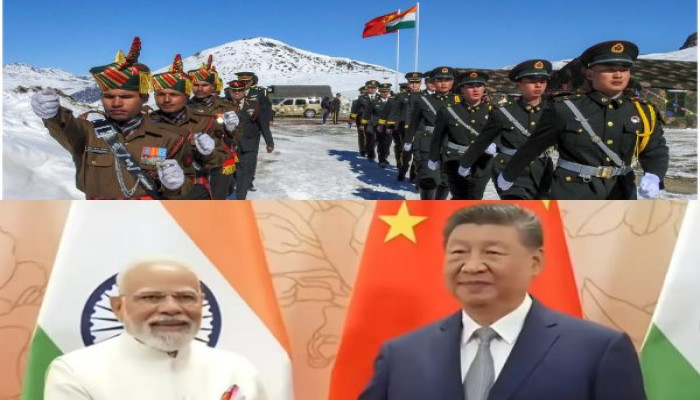China, India hold talks on western border control; agree to maintain 'active and in-depth dialogue'
- In Reports
- 07:20 PM, Oct 29, 2025
- Myind Staff
India and China have held a fresh round of border talks to improve communication and reduce tensions along the western part of their disputed border. Both countries agreed to keep an “active and in-depth dialogue” through military and diplomatic channels, China’s Defence Ministry said on Wednesday.
The talks took place on Saturday on the Indian side of the border, focusing on better coordination and management of sensitive zones along the Line of Actual Control.
“The 23rd round of India-China Corps Commander Level Meeting was held at Chushul-Moldo border meeting point on 25th October 2025. This was the first meeting of the General Level Mechanism in the Western Sector since the 24th round of Special Representatives Talks held on 19 August 2025. The talks were held in a friendly and cordial atmosphere,” the Ministry of External Affairs said in an official release.
China said both militaries reaffirmed their commitment to avoid misunderstandings and maintain peace and stability in the western sector.
While India’s Ministry of External Affairs has not yet issued a detailed statement, officials have earlier described the discussions as “constructive” and helpful in easing long-standing border tensions.
In July, the two sides held talks in eastern Ladakh, which China described as “candid.” After that meeting, India said it was “satisfied with the general prevalence of peace and tranquillity in the border areas,” calling the talks a positive sign toward the gradual normalisation of ties.
The renewed dialogue comes amid a slow but visible thaw in relations since the deadly Galwan Valley clash in 2020. Although several points of friction remain unresolved, both countries appear focused on maintaining stability through regular communication and confidence-building steps. Another round of talks is expected later this year.
India and China share one of the most complex relationships in the world. The two neighbours fought a border war in the 1960s and have since experienced periods of deep mistrust, especially after the 2020 clashes that killed soldiers on both sides.
Despite these political and military strains, economic ties between the two nations remain strong. China continues to supply technology and materials vital for India’s manufacturing ambitions, while India’s growing consumer market provides a major opportunity for Chinese businesses.
Since former US President Donald Trump’s trade war with both countries, India and China have worked quietly to bring stability to their relations. In August 2025, Prime Minister Narendra Modi visited China for the first time in seven years to attend a security summit, signalling a potential reset in ties.
By the end of October, the first passenger flight between India and China took off from Kolkata, five years after direct services were suspended. The restored route is expected to boost tourism, education, and business travel, marking a small but important step in rebuilding engagement.
Relations had earlier hit a low after the 2017 Doklam standoff and again during the Galwan Valley clashes in 2020. In response, India restricted Chinese technology, suspended tourist visas for Chinese nationals, banned apps like TikTok, and blocked major investment proposals from automakers BYD and Great Wall Motor. It also moved closer to the United States as competition with China intensified.
Tensions flared again this year after Pakistan claimed that Chinese-made J-10C jets were used to shoot down Indian aircraft during a brief conflict. India accused China of helping Pakistan with defence and satellite support, while Beijing grew cautious of India’s push to attract global manufacturing investment, recalling several Chinese staff from Indian projects.
Still, trade between the two countries has remained steady. China continues to be India’s second-largest trading partner after the United States, with total trade reaching $127 billion last year, including $ 109 billion in Chinese exports. The figures highlight how economic needs continue to bind the two nations despite a relationship marked by caution and mistrust.







Comments